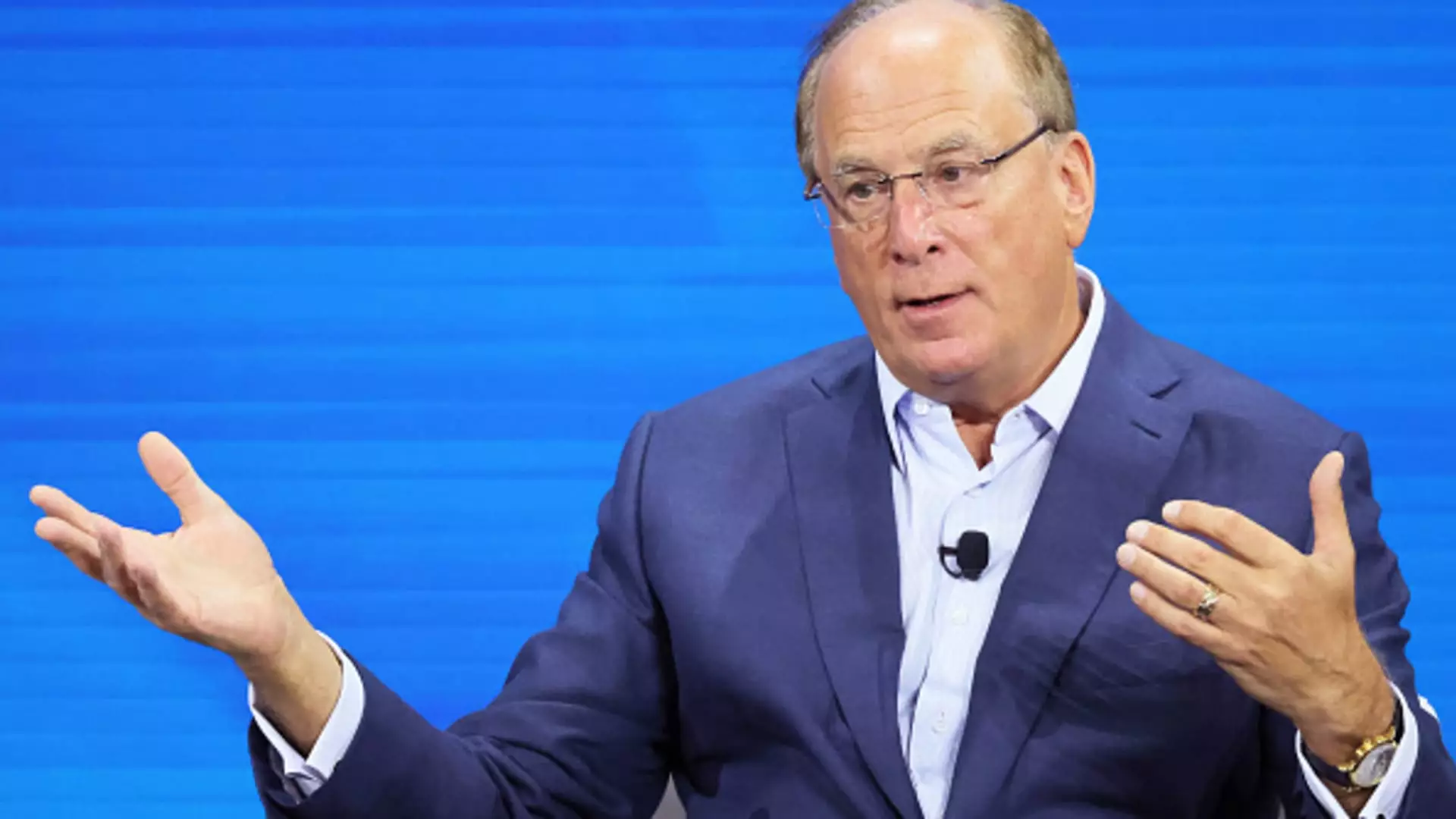BlackRock, the preeminent global asset manager, has recently emerged as a focal point for investors, particularly with Jim Cramer highlighting it on his Bullpen stocks-to-watch list. This follows a remarkable surge in BlackRock’s share prices, propelled by third-quarter earnings that significantly exceeded analysts’ forecasts. The company’s assets under management (AUM) have also reached an astonishing $11.5 trillion, demonstrating a robust inflow momentum that coincides with the positive trends in the stock market. This unprecedented financial performance not only affirms BlackRock’s leadership in the asset management sector but also underscores its capacity to generate remarkable organic growth.
Larry Fink, BlackRock’s CEO, has been vocally optimistic about the company’s performance and prospects. During a recent interview with CNBC, he discerned that the firm has managed to add $2 trillion in AUM over the last five years. This increase in assets is comparable to the entirety of certain large asset management firms, showcasing BlackRock’s exceptional ability to attract capital even amidst turbulent market conditions. Furthermore, Fink’s announcement of the strategic acquisition of Global Infrastructure Partners for $12.5 billion adds a significant layer of value to the company’s portfolio, as it contributes over $100 billion in new assets. These strategic moves not only enhance BlackRock’s competitive edge but also demonstrate a calculated approach to growth.
As the financial industry marked the commencement of the quarterly earnings season, several major players, including Wells Fargo and Morgan Stanley, reported satisfying results. The prevailing economic landscape has been turbulent, primarily due to prolonged high-interest rates mandated by the Federal Reserve. Recently, the Federal Reserve enacted a significant 50-basis-point rate cut, sparking a discussion about potential further cuts before the year closes out. Historically, performance indicators during such scenarios can be quite telling; as seen during previous cycles, asset managers can leverage lower rates to attract more liquidity and, consequently, more clients.
The impressive performance of BlackRock shares—demonstrating a more-than-12% increase over the last month—outpaces the broader market, exemplified by the S&P 500’s approximate 4% rise. Jim Cramer acknowledges that while BlackRock’s stocks have appreciating value, there remains potential for continued growth. This sentiment reflects a broader optimism towards the company, reinforcing the idea that, despite notable price adjustments, opportunities exist for even greater returns moving forward.
While BlackRock may appear to be a suitable addition to investment portfolios, Jim Cramer emphasizes a cautious approach. He acknowledges an inclination to invest in BlackRock sooner but has priority considerations regarding Wells Fargo and Morgan Stanley. Such deliberation points to a fundamental principle in investment strategy: patience. Making well-informed and necessity-driven decisions is essential; hasty investments often lead to regrettable pitfalls.
Cramer’s methodology aligns with the ethos of his investment club, ensuring transparency and systematic engagement with portfolio stocks. The commitment to waiting a designated period before executing trades post-discussion is indicative of a broader strategy aimed at minimizing risk and maximizing opportunity. This reflective approach embodies a conscientiousness that is necessary in creating a sustainable investment plan.
BlackRock’s recent surges in performance and strategic maneuvers signify a company on solid footing and with vibrant prospects for future growth. Investors should remain vigilant and consider both the risks and opportunities associated with high-performing stocks in a fluctuating market. The current momentum combined with Cramer’s analytical foresight creates a compelling narrative surrounding BlackRock, positioning it as a significant player to watch in the coming months. As the financial landscape continues to evolve, insight-driven investments will remain integral to optimizing portfolio performance.

Leave a Reply